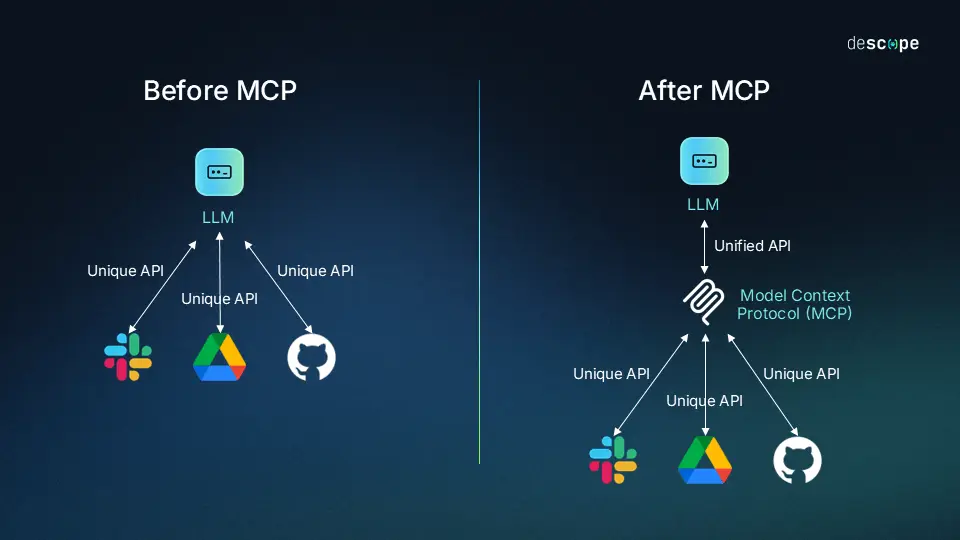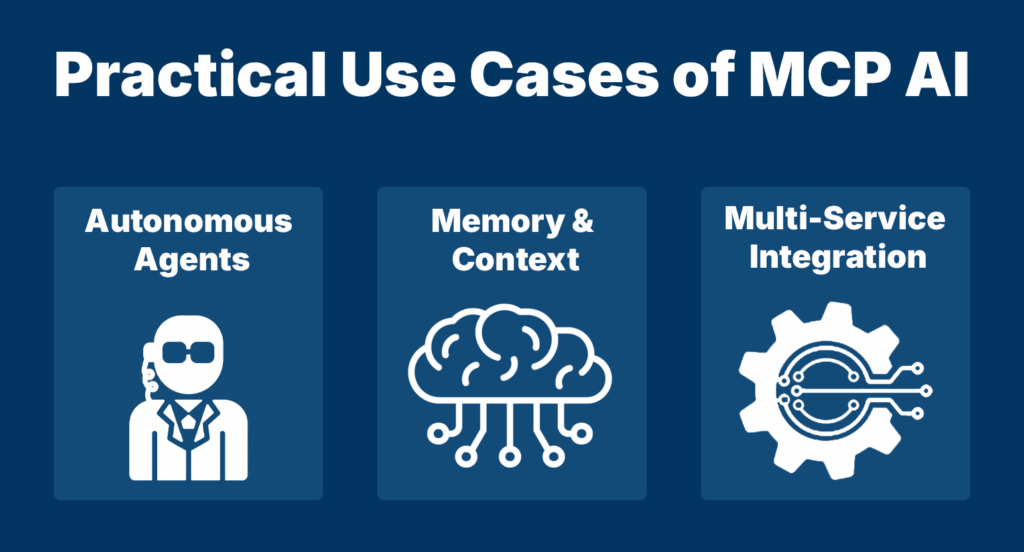- July 10, 2025
- by Anoop Kumar
The Model-Context Protocol (MCP): The Missing Link in Scalable AI Tool Integration
Why MCP Is a Game-Changer for AI in 2025
AI is no longer just about smarter models—it’s about smarter integrations. In 2025, enterprise adoption of large language models (LLMs) like GPT-4o and Claude 3 is exploding, but integration remains the biggest barrier.
Enter the Model-Context Protocol (MCP)—a new open standard that transforms how LLMs interact with your tools, APIs, and internal systems.
🧠 Think of MCP as the HTTP of tool-augmented AI.
What Is MCP?

The Model-Context Protocol (MCP) is a standardized way for tools to expose their capabilities to AI models using:
- A JSON schema to describe inputs/outputs
- A universal, model-agnostic endpoint definition
Developed by Anthropic (makers of Claude), MCP enables tools to work across multiple AI models without rewriting code or building custom plugins for each model.
Why Is MCP Needed?
Before MCP, integrating tools with AI models looked like this:
- 🔁 One plugin per model × per tool = M × N integrations
- 🚧 High engineering effort
- ⚠️ Inconsistent context passing
- 🧩 No interoperability
Now, with MCP:
- 🛠️ One tool = One MCP-compliant endpoint
- ⚙️ M tools + N models = M + N integrations
- 🔄 Seamless switching between GPT, Claude, Mistral, LLaMA, and more
This means faster AI integrations, reusable tool logic, and scalable deployments.
Real-World Benefits
✅ Reduced Development Time
A benchmark from a major enterprise AI team showed:
- 🕐 Old integration time: 18–22 hours
- ⚡ With MCP: Under 2 hours (with tests)
🔁 One-Time Setup
Expose your APIs with JSON + POST — no SDKs or proprietary plugins required.
🌐 Cross-Model Compatibility
Write once, integrate with:
- OpenAI GPT-4o
- Anthropic Claude 3
- Meta LLaMA models
- Mistral, Groq, open-source agents
Use Cases: How MCP Unlocks Value

Industry | Use Case Example |
Healthcare | LLMs calling EHR or lab APIs for real-time decision support |
Fintech | AI analyzing transactions via secure bank APIs |
HR Tech | Chatbots processing leave requests in HR systems |
DevOps | Claude triggering alerts via system monitoring endpoints |
E-commerce | GPT auto-updating product descriptions from inventory tools |
🛠️ MCP makes your enterprise tools AI-augmented without full rewrites.
Developer Workflow: What Changes?
Before MCP:
- 1 model → 1 custom plugin per tool
- Tool logic duplicated across vendors
- Rewrites needed after each model update
After MCP:
- 1 JSON schema + 1 POST endpoint per tool
- Plug-and-play across all LLMs
- Update once, support all
Strategic Insight: The Next AI Advantage Is Interoperability
AI models are becoming commoditized. Your competitive edge lies in:
- ⏱️ Faster AI deployment
- 🔌 Better tool integration
- ⚒️ Lower engineering costs
- 📈 Scalable product growth
MCP isn’t just an integration trick—it’s a business enabler for the AI-native economy.
Final Takeaway: Don’t Let Tooling Hold Back Your AI Potential
Whether you’re building a co-pilot, a multi-agent orchestration platform, or AI-powered SaaS, MCP is the new standard to watch.
It makes your tools:
- 📡 Discoverable
- ⚙️ Plug-and-play
- 🔁 Reusable across models
- 🔒 Secure for enterprise use
Next Steps
- ✅ Make your APIs MCP-ready
- 🧱 Use standard JSON schemas
- 🚀 Join open-source communities building MCP agents
The AI future isn’t single-model. It’s multi-model, multi-tool—and MCP makes that future possible.
Read these blogs by gNxt Systems. They might interest you:
Why Every Digital Transformation Strategy Needs AI Agents
The Future is Agentic: Preparing Enterprises for the Next Wave of AI Evolution
What Is Model Context Protocol (MCP) and Why It Matters for AI Developers in 2025
Also click this link to checkout Agentic AI Offerings by gNxt Systems
About Author

CEO at gNxt Systems
With 25+ years of expertise, Mr. Anoop Jain delivers complex projects, driving innovation through IT strategies and inspiring teams to achieve milestones in a competitive, technology-driven landscape.


